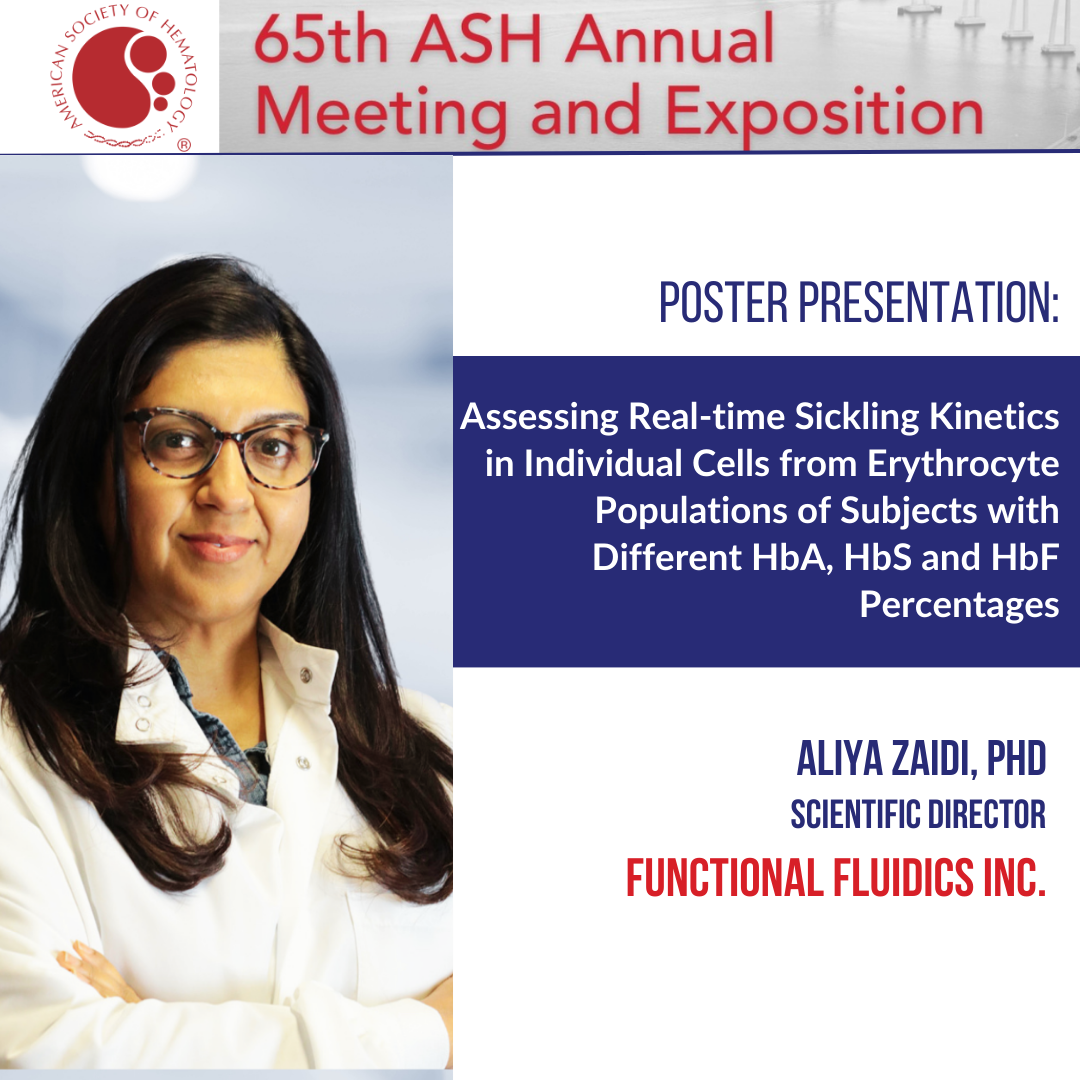Oral and Poster Abstracts
Oral
113. Hemoglobinopathies, Excluding Thalassemia – Basic and Translational Science: Innovative Therapeutic Approaches in Sickle Cell Disease
Yerba Buena Ballroom Salon 8 (San Francisco Marriott Marquis)
Patrick C. Hines, MD, PhD1, Sriram Krishnamoorthy, PhD2*, Jennell White, PhD1*, Dipti Gupta, MS2*, Arjan van der Flier, PhD2*, Moira M. Lancelot, MD3, Robert T. Peters, PhD, BS2, Haiyan Jiang, PhD2, William E Hobbs II, MD, PhD2 and David R. Light, PhD4
1Department of Pediatrics, Division of Pediatric Critical Care Medicine, Wayne State University School of Medicine, Detroit, MI
2Hematology Cell and Gene Therapy, Biogen Idec, Cambridge, MA
3Division of Pediatric Hematology/Oncology, Marshfield Clinic, Marshfield, WI
4Biogen Idec, Cambridge, MA
Sickle cell disease (SCD) is caused by a point mutation in the beta-chain of hemoglobin, which triggers a complex pathophysiology resulting in recurrent, painful vaso-occlusive events (VOCs) and chronic hemolytic anemia. Among other abnormalities, sickle red blood cells (RBCs) are more adhesive than normal RBCs. Sickle RBC adhesion is an important pathway leading to both VOC and hemolysis: adhesive interactions promote the formation of blood flow-obstructing heterocellular aggregates that induce ischemic tissue damage and slow the transit of RBCs through the vasculature, promoting sickle hemoglobin polymerization and hemolysis. The capacity of sickle RBCs to adhere to endothelium positively correlates with disease severity. Interventions that reduce sickle RBC adhesion, in particular that of reticulocytes, by blocking specific molecular targets may limit or prevent disease sequelae. Very Late Antigen – 4 (VLA-4 or α4β1 integrin) is an important integrin on reticulocytes that mediates adhesive interactions to endothelial and plasma vascular cell adhesion molecule – 1 (VCAM-1), plasma fibrinogen, and other ligands. VLA-4 is expressed on the surface of sickle reticulocytes, with levels decreasing during maturation such that mature RBCs do not express surface VLA-4. Natalizumab is a recombinant humanized antibody that binds to the α4 subunit of VLA-4 and is used to treat multiple sclerosis (MS) and Crohn’s Disease (CD) by preventing leukocyte trafficking into tissues at sites of inflammation. We investigated the ability of natalizumab to block VLA-4 in the context of sickle whole blood, and evaluated the effect on sickle reticulocyte, mature erythrocyte, and leukocyte adhesion during physiologic flow conditions. Whole blood samples obtained from SCD donors were analyzed for saturation binding of natalizumab to surface VLA-4 on leukocytes and reticulocytes using flow cytometry. Up to 20% of reticulocytes from SCD donors (n=13) were positive for VLA-4 surface staining, whereas VLA-4 was undetectable on the surface of reticulocytes from healthy donors (n=4). VLA-4 on SCD reticulocytes and mononuclear leukocytes was saturated by natalizumab concentrations lower than known plasma trough concentrations achieved in MS and CD patients after natalizumab treatment, with SCD reticulocyte EC 50 = 0.11 ± 0.01 μg/mL and SCD leukocyte EC 50 = 0.16 ± 0.01 μg/mL (n=6). This translates to a binding affinity of 0.7 to 1.3 nM, similar to that found for healthy donor leukocytes. Both whole blood cells and isolated leukocytes from SCD donors adhered to immobilized VCAM-1 during physiologic flow conditions simulating post-capillary venules (shear stress =1 dynes/cm 2) using a microfluidic flow-based adhesion system. Leukocytes from SCD donors adhered more to VCAM-1 (Mean = 20.7 + 10.0 from n=7) than leukocytes from healthy donors (Mean = 5.0 + 1.4 from n=5). The adhesion of leukocytes and reticulocytes to VCAM-1 was blocked by natalizumab in a dose-dependent manner and as a function of natalizumab saturation of cell surface VLA-4. Therapeutic IgG4 antibodies, including natalizumab, undergo chain shuffling in vivo with endogenous IgG4, leading to mono-specific IgG4 molecules, with one Fab arm specific to the antigen it was raised against. Compared to divalent natalizumab, monovalent chain-shuffled natalizumab bound to SCD reticulocytes at a 7-fold higher EC 50 and inhibited SCD reticulocyte adhesion to VCAM-1 at higher antibody concentrations (10 and 1 µg/mL). While increased, these values are still below trough natalizumab levels achieved in natalizumab-treated patients. In summary, natalizumab bound VLA-4 on the surface of SCD reticulocytes and leukocytes similarly to healthy donor leukocytes and blocked adhesion of SCD reticulocytes and leukocytes to immobilized VCAM-1 under shear conditions. Natalizumab binding and adhesion inhibition occurred at plasma concentrations similar to those seen in natalizumab treated MS and CD patients. Based on these findings, natalizumab may have potential as an anti-adhesive therapy for SCD. Further clinical studies are needed to evaluate the safety and efficacy of natalizumab in SCD.
Disclosures: Hines: Biogen Idec: Research Funding. Krishnamoorthy: Biogen Idec: Employment, Equity Ownership.White: Biogen Idec: Research Funding. Gupta: Biogen Idec: Employment, Equity Ownership. van der Flier: Biogen Idec:Employment, Equity Ownership. Peters: Biogen Idec: Employment, Equity Ownership. Jiang: Biogen Idec: Employment, Equity Ownership. Hobbs: Biogen Idec: Employment, Equity Ownership. Light: Biogen Idec: Employment, Equity Ownership.



